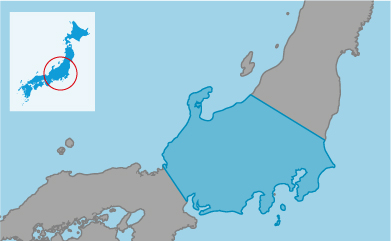
In our ordering of the Japanese landscape, Central Honshu is Japan’s heartland and has at its core Tokyo, the enigmatic metropolis that entrances those who embrace its potent fusion of imagination, vigour and wealth. Founded over 500 years ago and long the political and economic centre of power under the samurai, the city’s inhabitants seem to have nonchalantly usurped the title of capital from Kyoto after the Meiji Restoration in 1868. ‘Having reinvented itself many times over as a result of natural disaster, fire, war and now through the inspiration of its inhabitants, Tokyo is remarkably resilient; a megalopolis whose continual metamorphosis has made it one of the most interesting and liveable cities in the world.
Surrounding Tokyo is the Kanto Plain; to the north and east are Japan’s Central Alps; to the west Mt. Fuji and further beyond Nagoya, Japan’s third largest city, a major centre of high-tech industry. The mountain ranges that roughly divide north from south also produce some of the most pronounced differences in climate; mild and dryer winters to the south contrast with the wintry weather to the north, where some of the greatest snowfalls anywhere on earth occur each year.
Crossing the region are ancient highways, including the famed Nakasendo Way and Tokaido Trail, connecting the elegant cities of Kamakura, Nikko, Matsumoto, Takayama, Kanazawa and Kawagoe, which flourished with the samurai's pre-eminence. The Boso and Izu Peninsulas, with a climate more akin to the sub-tropics, contrast dramatically with the more inaccessible interior of the Snow Country found to the north in Gifu, Nagano and Niigata. Here, hidden away in isolated valleys and on mountainsides, are beautifully kept post-towns and delightful villages, both redolent of a much older Japan. Mountain climbers scale the hundreds of peaks nearby, some soaring over 3,000m; while back in the south, close to the elegant presence of Mt.Fuji, surfers crowd the beaches on the Pacific Shonan Coast.




